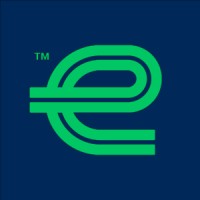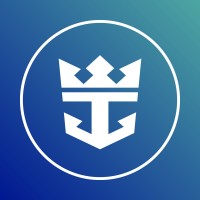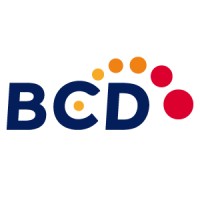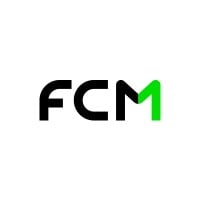
Enterprise Mobility Company Cyber Security Posture
enterprisemobility.comAt Enterprise Mobility™ we are paving a new way forward by creating better experiences for how we move. We give people around the world the ability to connect in ways that suit their unique needs. It’s a bold idea that has defined our purpose-led, people-first organization for over 65 years, and it’s one that we continue to strive toward with every journey. Through our trusted brands and our portfolio of offerings, we aim to reach the highest levels of customer service with each interaction. And we invest in — and care about — each other, our communities and every journey. It’s a point of pride and distinction, rooted in our origins. It’s how we grew from a pioneer with a fleet of seven cars to a global mobility leader with more than 90,000 team members around the world. And it’s what will continue to drive the future of the organization and mobility itself. Over the years, we’ve learned moving forward isn’t a simple matter of going from point A to B. Today, mobility is the movement of people and goods. It goes beyond the vehicles we drive to encompass an integrated way of travel that meets every individual’s unique needs and preferences. That is why it’s our vision to be the world’s best and most trusted mobility company. As mobility continues to evolve, we'll continue to innovate to work toward a reimagined mobility future that is more accessible, efficient and sustainable for all.
Enterprise Mobility Company Details
enterprise-holdings-inc-
64778 employees
144975.0
561
Travel Arrangements
enterprisemobility.com
Scan still pending
ENT_3331854
In-progress
Between 900 and 1000
This score is AI-generated and less favored by cyber insurers, who prefer the TPRM score.
 Enterprise Mobility Global Score
Enterprise Mobility Global Score.png)

Enterprise Mobility Company Scoring based on AI Models
| Model Name | Date | Description | Current Score Difference | Score |
|---|---|---|---|---|
| AVERAGE-Industry | 03-12-2025 | This score represents the average cybersecurity rating of companies already scanned within the same industry. It provides a benchmark to compare an individual company's security posture against its industry peers. | N/A | Between 900 and 1000 |
Enterprise Mobility Company Cyber Security News & History
| Entity | Type | Severity | Impact | Seen | Url ID | Details | View |
|---|
Enterprise Mobility Company Subsidiaries

At Enterprise Mobility™ we are paving a new way forward by creating better experiences for how we move. We give people around the world the ability to connect in ways that suit their unique needs. It’s a bold idea that has defined our purpose-led, people-first organization for over 65 years, and it’s one that we continue to strive toward with every journey. Through our trusted brands and our portfolio of offerings, we aim to reach the highest levels of customer service with each interaction. And we invest in — and care about — each other, our communities and every journey. It’s a point of pride and distinction, rooted in our origins. It’s how we grew from a pioneer with a fleet of seven cars to a global mobility leader with more than 90,000 team members around the world. And it’s what will continue to drive the future of the organization and mobility itself. Over the years, we’ve learned moving forward isn’t a simple matter of going from point A to B. Today, mobility is the movement of people and goods. It goes beyond the vehicles we drive to encompass an integrated way of travel that meets every individual’s unique needs and preferences. That is why it’s our vision to be the world’s best and most trusted mobility company. As mobility continues to evolve, we'll continue to innovate to work toward a reimagined mobility future that is more accessible, efficient and sustainable for all.
Access Data Using Our API

Get company history
.png)
Enterprise Mobility Cyber Security News
Enterprise Cybersecurity in the CES Spotlight
We uncovered two enterprise-level solutions that should rpove interesting to IT managers and security directors. Here's a closer look.
24+ Fascinating BYOD Statistics (2024)
The latest BYOD research, statistics, and trends. Learn about BYOD adoption rates, how BYOD affects productivity, and BYOD security risks.
Explore modern cybersecurity for the mobile mission
Knox provides clear and actionable asset intelligence that goes beyond traditional mobile device management platforms and enables agency IT to ...
The Impact of Remote Desktop Protocols on Cybersecurity: Safeguarding Business with TSplus
The article examines the effects of desktop protocol security threats and demonstrates how businesses protect operations with TSplus Advanced Security ...
Northeast Ohio's TRG adds cybersecurity to its lineup — plus 2 more M&A deals to know
TRG, the managed technology services provider, leads this week's M&A roundup with a merger with a sister company.
'Cybersecurity likely to become key feature in next-gen connected vehicles'
With cars and transport vehicles becoming more connected and software-driven, automotive cybersecurity is likely to become a standard feature ...
The top 5 emerging cybersecurity threats: How to prepare your business for 2025
The cybersecurity landscape is constantly changing and. cyberattacks. are still on the rise, with new threats challenging businesses' ...
Best Practices for Deploying Zero Trust In Your Mobile Environment
Mobile devices are everywhere, and so are the cybercriminals bent on exploiting them. The good news? The mobile security market is rapidly ...
Kyndryl & Palo Alto to provide enterprise and cybersecurity services
Kyndryl and Palo Alto Networks are partnering to help businesses deliver consistent security and an enhanced user experience for customers ...

Enterprise Mobility Similar Companies

MSC Cruises
Headquartered in Geneva, Switzerland, MSC Cruises is the world’s third largest cruise lines and the market leader in Europe, South America, the Middle East and Southern Africa, with a strong and growing presence in North America and the Far East. The MSC Cruises fleet consists of 22 modern ships wi

Norwegian Cruise Line Holdings Ltd.
Norwegian Cruise Line Holdings Ltd. (NYSE: NCLH) is a leading global cruise company which operates Norwegian Cruise Line, Oceania Cruises and Regent Seven Seas Cruises. With a combined fleet of 32 ships and approximately 66,500 berths, NCLH offers itineraries to approximately 700 destinations worl

Royal Caribbean Group
At Royal Caribbean Group, we deliver unforgettable vacations to guests who trust us with life’s greatest moments. We build the best ships, and even better careers, all while doing the right thing. We are passionate. We are innovative. We are unstoppable. We open the world to our employees. Your jour

BCD Travel
BCD Travel helps companies travel smart and achieve more. We drive program adoption, cost savings and talent retention through digital experiences that simplify business travel. Our 15,000+ dedicated team members service clients in 170+ countries as we shape a sustainable future for business travel.

FCM Travel UK
Welcome to FCM, the alternative corporate travel company. What makes us the alternative? We make business travel a pleasure. Don’t just ‘get there’. Connect globally. Think differently. Travel better. Give yourself the flexibility to do corporate travel on your own terms. We’re here for a

DER Touristik vormals REWE Touristik GmbH
DER TOURISTIK GROUP AUF WACHSTUMSKURS Die DER Touristik Group gehört heute zu den führenden europäischen Reisekonzernen. Sie vereint unter ihrem Dach verschiedene Geschäftsfelder rund ums Thema Reisen und agiert seit 2018 strukturell als Holding mit vier Divisions. Durch den Zukauf der europäische

Frequently Asked Questions (FAQ) on Cybersecurity Incidents
Enterprise Mobility CyberSecurity History Information
Total Incidents: According to Rankiteo, Enterprise Mobility has faced 0 incidents in the past.
Incident Types: As of the current reporting period, Enterprise Mobility has not encountered any cybersecurity incidents.
Total Financial Loss: The total financial loss from these incidents is estimated to be {total_financial_loss}.
Cybersecurity Posture: The company's overall cybersecurity posture is described as At Enterprise Mobility™ we are paving a new way forward by creating better experiences for how we move. We give people around the world the ability to connect in ways that suit their unique needs. It’s a bold idea that has defined our purpose-led, people-first organization for over 65 years, and it’s one that we continue to strive toward with every journey. Through our trusted brands and our portfolio of offerings, we aim to reach the highest levels of customer service with each interaction. And we invest in — and care about — each other, our communities and every journey. It’s a point of pride and distinction, rooted in our origins. It’s how we grew from a pioneer with a fleet of seven cars to a global mobility leader with more than 90,000 team members around the world. And it’s what will continue to drive the future of the organization and mobility itself. Over the years, we’ve learned moving forward isn’t a simple matter of going from point A to B. Today, mobility is the movement of people and goods. It goes beyond the vehicles we drive to encompass an integrated way of travel that meets every individual’s unique needs and preferences. That is why it’s our vision to be the world’s best and most trusted mobility company. As mobility continues to evolve, we'll continue to innovate to work toward a reimagined mobility future that is more accessible, efficient and sustainable for all..
Detection and Response: The company detects and responds to cybersecurity incidents through {description_of_detection_and_response_process}.
Incident Details
Incident 1: Ransomware Attack
Title: {Incident_Title}
Description: {Brief_description_of_the_incident}
Date Detected: {Detection_Date}
Date Publicly Disclosed: {Disclosure_Date}
Date Resolved: {Resolution_Date}
Type: {Type_of_Attack}
Attack Vector: {Attack_Vector}
Vulnerability Exploited: {Vulnerability}
Threat Actor: {Threat_Actor}
Motivation: {Motivation}
Incident 2: Data Breach
Title: {Incident_Title}
Description: {Brief_description_of_the_incident}
Date Detected: {Detection_Date}
Date Publicly Disclosed: {Disclosure_Date}
Date Resolved: {Resolution_Date}
Type: {Type_of_Attack}
Attack Vector: {Attack_Vector}
Vulnerability Exploited: {Vulnerability}
Threat Actor: {Threat_Actor}
Motivation: {Motivation}
Common Attack Types: As of now, the company has not encountered any reported incidents involving common cyberattacks.
Identification of Attack Vectors: The company identifies the attack vectors used in incidents through {description_of_identification_process}.
Impact of the Incidents
Incident 1: Ransomware Attack
Financial Loss: {Financial_Loss}
Data Compromised: {Data_Compromised}
Systems Affected: {Systems_Affected}
Downtime: {Downtime}
Operational Impact: {Operational_Impact}
Conversion Rate Impact: {Conversion_Rate_Impact}
Revenue Loss: {Revenue_Loss}
Customer Complaints: {Customer_Complaints}
Brand Reputation Impact: {Brand_Reputation_Impact}
Legal Liabilities: {Legal_Liabilities}
Identity Theft Risk: {Identity_Theft_Risk}
Payment Information Risk: {Payment_Information_Risk}
Incident 2: Data Breach
Financial Loss: {Financial_Loss}
Data Compromised: {Data_Compromised}
Systems Affected: {Systems_Affected}
Downtime: {Downtime}
Operational Impact: {Operational_Impact}
Conversion Rate Impact: {Conversion_Rate_Impact}
Revenue Loss: {Revenue_Loss}
Customer Complaints: {Customer_Complaints}
Brand Reputation Impact: {Brand_Reputation_Impact}
Legal Liabilities: {Legal_Liabilities}
Identity Theft Risk: {Identity_Theft_Risk}
Payment Information Risk: {Payment_Information_Risk}
Average Financial Loss: The average financial loss per incident is {average_financial_loss}.
Commonly Compromised Data Types: The types of data most commonly compromised in incidents are {list_of_commonly_compromised_data_types}.
Incident 1: Ransomware Attack
Entity Name: {Entity_Name}
Entity Type: {Entity_Type}
Industry: {Industry}
Location: {Location}
Size: {Size}
Customers Affected: {Customers_Affected}
Incident 2: Data Breach
Entity Name: {Entity_Name}
Entity Type: {Entity_Type}
Industry: {Industry}
Location: {Location}
Size: {Size}
Customers Affected: {Customers_Affected}
Response to the Incidents
Incident 1: Ransomware Attack
Incident Response Plan Activated: {Yes/No}
Third Party Assistance: {Yes/No}
Law Enforcement Notified: {Yes/No}
Containment Measures: {Containment_Measures}
Remediation Measures: {Remediation_Measures}
Recovery Measures: {Recovery_Measures}
Communication Strategy: {Communication_Strategy}
Adaptive Behavioral WAF: {Adaptive_Behavioral_WAF}
On-Demand Scrubbing Services: {On_Demand_Scrubbing_Services}
Network Segmentation: {Network_Segmentation}
Enhanced Monitoring: {Enhanced_Monitoring}
Incident 2: Data Breach
Incident Response Plan Activated: {Yes/No}
Third Party Assistance: {Yes/No}
Law Enforcement Notified: {Yes/No}
Containment Measures: {Containment_Measures}
Remediation Measures: {Remediation_Measures}
Recovery Measures: {Recovery_Measures}
Communication Strategy: {Communication_Strategy}
Adaptive Behavioral WAF: {Adaptive_Behavioral_WAF}
On-Demand Scrubbing Services: {On_Demand_Scrubbing_Services}
Network Segmentation: {Network_Segmentation}
Enhanced Monitoring: {Enhanced_Monitoring}
Incident Response Plan: The company's incident response plan is described as {description_of_incident_response_plan}.
Third-Party Assistance: The company involves third-party assistance in incident response through {description_of_third_party_involvement}.
Data Breach Information
Incident 2: Data Breach
Type of Data Compromised: {Type_of_Data}
Number of Records Exposed: {Number_of_Records}
Sensitivity of Data: {Sensitivity_of_Data}
Data Exfiltration: {Yes/No}
Data Encryption: {Yes/No}
File Types Exposed: {File_Types}
Personally Identifiable Information: {Yes/No}
Prevention of Data Exfiltration: The company takes the following measures to prevent data exfiltration: {description_of_prevention_measures}.
Handling of PII Incidents: The company handles incidents involving personally identifiable information (PII) through {description_of_handling_process}.
Ransomware Information
Incident 1: Ransomware Attack
Ransom Demanded: {Ransom_Amount}
Ransom Paid: {Ransom_Paid}
Ransomware Strain: {Ransomware_Strain}
Data Encryption: {Yes/No}
Data Exfiltration: {Yes/No}
Ransom Payment Policy: The company's policy on paying ransoms in ransomware incidents is described as {description_of_ransom_payment_policy}.
Data Recovery from Ransomware: The company recovers data encrypted by ransomware through {description_of_data_recovery_process}.
Regulatory Compliance
Incident 1: Ransomware Attack
Regulations Violated: {Regulations_Violated}
Fines Imposed: {Fines_Imposed}
Legal Actions: {Legal_Actions}
Regulatory Notifications: {Regulatory_Notifications}
Incident 2: Data Breach
Regulations Violated: {Regulations_Violated}
Fines Imposed: {Fines_Imposed}
Legal Actions: {Legal_Actions}
Regulatory Notifications: {Regulatory_Notifications}
Regulatory Frameworks: The company complies with the following regulatory frameworks regarding cybersecurity: {list_of_regulatory_frameworks}.
Ensuring Regulatory Compliance: The company ensures compliance with regulatory requirements through {description_of_compliance_measures}.
Lessons Learned and Recommendations
Incident 1: Ransomware Attack
Lessons Learned: {Lessons_Learned}
Incident 2: Data Breach
Lessons Learned: {Lessons_Learned}
Incident 1: Ransomware Attack
Recommendations: {Recommendations}
Incident 2: Data Breach
Recommendations: {Recommendations}
Key Lessons Learned: The key lessons learned from past incidents are {list_of_key_lessons_learned}.
Implemented Recommendations: The company has implemented the following recommendations to improve cybersecurity: {list_of_implemented_recommendations}.
References
Additional Resources: Stakeholders can find additional resources on cybersecurity best practices at {list_of_additional_resources}.
Investigation Status
Incident 1: Ransomware Attack
Investigation Status: {Investigation_Status}
Incident 2: Data Breach
Investigation Status: {Investigation_Status}
Communication of Investigation Status: The company communicates the status of incident investigations to stakeholders through {description_of_communication_process}.
Stakeholder and Customer Advisories
Incident 1: Ransomware Attack
Stakeholder Advisories: {Stakeholder_Advisories}
Customer Advisories: {Customer_Advisories}
Incident 2: Data Breach
Stakeholder Advisories: {Stakeholder_Advisories}
Customer Advisories: {Customer_Advisories}
Advisories Provided: The company provides the following advisories to stakeholders and customers following an incident: {description_of_advisories_provided}.
Initial Access Broker
Incident 1: Ransomware Attack
Entry Point: {Entry_Point}
Reconnaissance Period: {Reconnaissance_Period}
Backdoors Established: {Backdoors_Established}
High Value Targets: {High_Value_Targets}
Data Sold on Dark Web: {Yes/No}
Incident 2: Data Breach
Entry Point: {Entry_Point}
Reconnaissance Period: {Reconnaissance_Period}
Backdoors Established: {Backdoors_Established}
High Value Targets: {High_Value_Targets}
Data Sold on Dark Web: {Yes/No}
Monitoring and Mitigation of Initial Access Brokers: The company monitors and mitigates the activities of initial access brokers through {description_of_monitoring_and_mitigation_measures}.
Post-Incident Analysis
Incident 1: Ransomware Attack
Root Causes: {Root_Causes}
Corrective Actions: {Corrective_Actions}
Incident 2: Data Breach
Root Causes: {Root_Causes}
Corrective Actions: {Corrective_Actions}
Post-Incident Analysis Process: The company's process for conducting post-incident analysis is described as {description_of_post_incident_analysis_process}.
Corrective Actions Taken: The company has taken the following corrective actions based on post-incident analysis: {list_of_corrective_actions_taken}.
Additional Questions
General Information
Ransom Payment History: The company has {paid/not_paid} ransoms in the past.
Last Ransom Demanded: The amount of the last ransom demanded was {last_ransom_amount}.
Last Attacking Group: The attacking group in the last incident was {last_attacking_group}.
Incident Details
Most Recent Incident Detected: The most recent incident detected was on {most_recent_incident_detected_date}.
Most Recent Incident Publicly Disclosed: The most recent incident publicly disclosed was on {most_recent_incident_publicly_disclosed_date}.
Most Recent Incident Resolved: The most recent incident resolved was on {most_recent_incident_resolved_date}.
Impact of the Incidents
Highest Financial Loss: The highest financial loss from an incident was {highest_financial_loss}.
Most Significant Data Compromised: The most significant data compromised in an incident was {most_significant_data_compromised}.
Most Significant System Affected: The most significant system affected in an incident was {most_significant_system_affected}.
Response to the Incidents
Third-Party Assistance in Most Recent Incident: The third-party assistance involved in the most recent incident was {third_party_assistance_in_most_recent_incident}.
Containment Measures in Most Recent Incident: The containment measures taken in the most recent incident were {containment_measures_in_most_recent_incident}.
Data Breach Information
Most Sensitive Data Compromised: The most sensitive data compromised in a breach was {most_sensitive_data_compromised}.
Number of Records Exposed: The number of records exposed in the most significant breach was {number_of_records_exposed}.
Ransomware Information
Highest Ransom Demanded: The highest ransom demanded in a ransomware incident was {highest_ransom_demanded}.
Highest Ransom Paid: The highest ransom paid in a ransomware incident was {highest_ransom_paid}.
Regulatory Compliance
Highest Fine Imposed: The highest fine imposed for a regulatory violation was {highest_fine_imposed}.
Most Significant Legal Action: The most significant legal action taken for a regulatory violation was {most_significant_legal_action}.
Lessons Learned and Recommendations
Most Significant Lesson Learned: The most significant lesson learned from past incidents was {most_significant_lesson_learned}.
Most Significant Recommendation Implemented: The most significant recommendation implemented to improve cybersecurity was {most_significant_recommendation_implemented}.
References
Most Recent Source: The most recent source of information about an incident is {most_recent_source}.
Most Recent URL for Additional Resources: The most recent URL for additional resources on cybersecurity best practices is {most_recent_url}.
Investigation Status
Current Status of Most Recent Investigation: The current status of the most recent investigation is {current_status_of_most_recent_investigation}.
Stakeholder and Customer Advisories
Most Recent Stakeholder Advisory: The most recent stakeholder advisory issued was {most_recent_stakeholder_advisory}.
Most Recent Customer Advisory: The most recent customer advisory issued was {most_recent_customer_advisory}.
Initial Access Broker
Most Recent Entry Point: The most recent entry point used by an initial access broker was {most_recent_entry_point}.
Most Recent Reconnaissance Period: The most recent reconnaissance period for an incident was {most_recent_reconnaissance_period}.
Post-Incident Analysis
Most Significant Root Cause: The most significant root cause identified in post-incident analysis was {most_significant_root_cause}.
Most Significant Corrective Action: The most significant corrective action taken based on post-incident analysis was {most_significant_corrective_action}.
What Do We Measure?
















Every week, Rankiteo analyzes billions of signals to give organizations a sharper, faster view of emerging risks. With deeper, more actionable intelligence at their fingertips, security teams can outpace threat actors, respond instantly to Zero-Day attacks, and dramatically shrink their risk exposure window.
These are some of the factors we use to calculate the overall score:
Identify exposed access points, detect misconfigured SSL certificates, and uncover vulnerabilities across the network infrastructure.
Gain visibility into the software components used within an organization to detect vulnerabilities, manage risk, and ensure supply chain security.
Monitor and manage all IT assets and their configurations to ensure accurate, real-time visibility across the company's technology environment.
Leverage real-time insights on active threats, malware campaigns, and emerging vulnerabilities to proactively defend against evolving cyberattacks.




